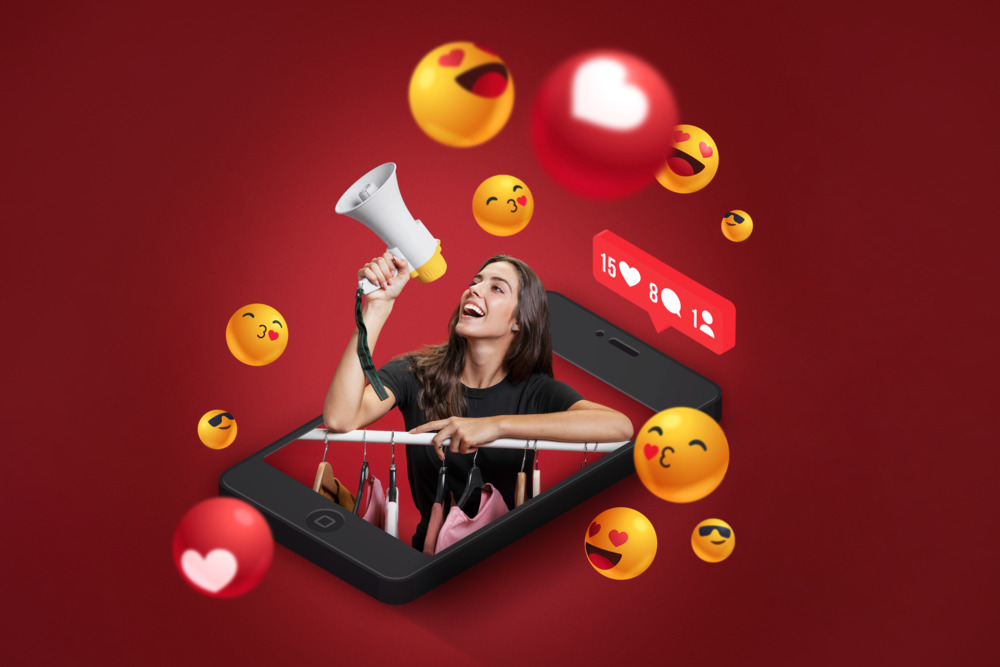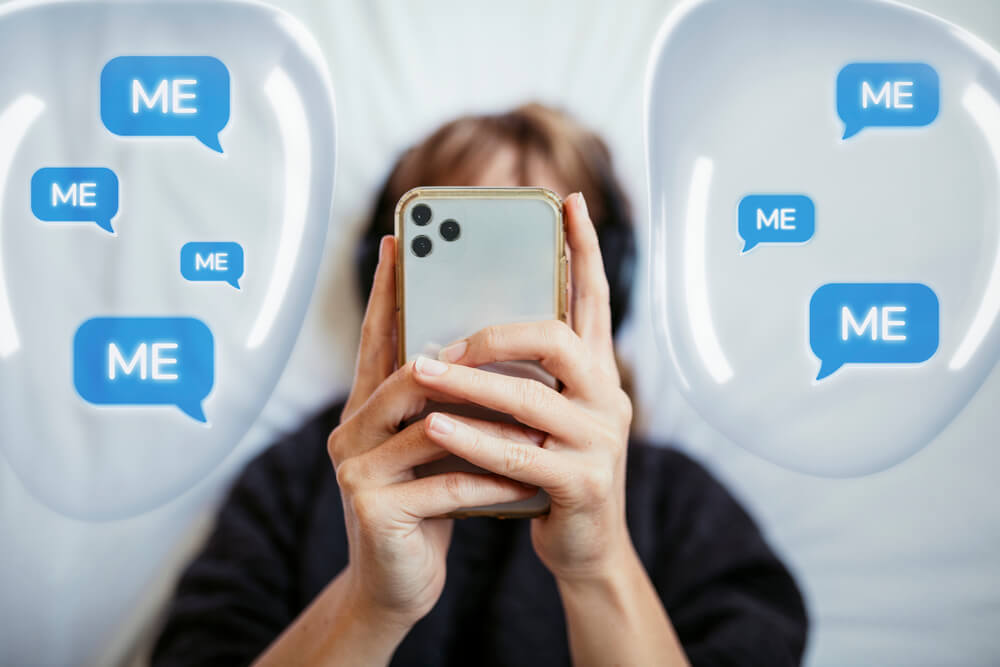Buzz marketing is a viral marketing technique that targets word-of-mouth promotion. This method relies on social interactions, media influencers, stunts, or simply creating a buzz around a new product/service.
There are many reasons businesses choose buzz marketing over other marketing strategies, such as cost efficiency, effectiveness, and longevity. The article will define buzz marketing, its features, benefits, and drawbacks, as well as practical tips on how to utilize it.
How does Buzz marketing work?
Several studies confirm that word-of-mouth marketing is the most effective technique to drive sales. According to the 2021 survey in the US, 59 percent of female Gen Z consumers relied most on recommendations from friends and family.
The WoM marketing nowadays is much broader than in the past. It covers social media marketing, influencer marketing, guerrilla marketing, and other types of inbound marketing strategies.
A lot of things can contribute to creating a marketing buzz. In all cases, the main goal is to get people to talk about your product or service. Let’s break down the top 3 primary drivers of buzz marketing strategy:
- Social Media Marketing
- Influencer Marketing
- Guerilla Marketing


Social Media Marketing
The increasing popularity of social media networks gave brands a chance to use it as a new dimension of buzz marketing. Social media platforms, including blogs, forums, and online communities accommodate a massive exchange of views among consumers. Hence, it is easier to spread the word or direct a message to large masses.
Social media platforms are often the very first channels to announce the launch of new products. How companies choose to format these announcements is a key to a successful buzz marketing strategy. Two of the most popular techniques that appear on social media are controversial marketing and FOMO (fear of missing out) marketing.
Some brands are famous online due to their controversial, funny, or unconventional posts. One of the greatest examples is Ryanair’s SMM strategy. The airline company often mocks itself through memes and short clips that often repeat the criticism of unsatisfied customers. Ryanair often posts about how they lose luggage, lack of space in front of seats, delayed flights, and rude customer service, however, this has an entertaining effect on internet users and often creates a buzz around Ryanair’s communication channels.
Another crucial aspect of social media is the opportunity for consumers to connect with the brands more directly. By answering the questions of users, responding to their comments, or re-posting their Stories the companies increase their consumers’ sense of brand connection. These relationships then trigger positive word-of-mouth processes.
Influencers and Buzz Marketing
Buzz marketing uses many different kinds of bait to create an unconscious lure for potential consumers. Influencer marketing is one of the most effective tools for that purpose. First of all, these accounts have a very targeted audience – people who respect their opinions, and who follow and regard them as role models. This allows brands to tailor a message to a group of similar-minded consumers.
The brands will often collaborate with influencers who then promote the product, announce the news, or provide feedback and recommend it to their followers. In some cases, influencer marketing is a pre-launch strategy, when influencers get to try an exclusive product not yet available to the public. The anticipation fuels the buzz around an upcoming product, feature, or service.
Airbnb is a frequent user of influencer marketing to create a buzz around new locations and homes available on their platform. For example, Airbnb developed a buzz marketing strategy in 2016 in London when the company created an exclusive townhouse “The Real London”. The place allowed visitors to experience local food and music. For the campaign, 25 influencers participated across different social media platforms. As a result, over a thousand people came to visit the townhouse within the next four days.
Guerrilla Marketing
Guerilla marketing is an unconventional marketing method that focuses on creating unique, bizarre, and strange experiences for the public. Since the main element of such a technique is to shock and/or surprise the audience it often takes place in the busiest areas like streets, public parks, festivals, and shopping centres.
This type of viral marketing is cost-effective which makes it a very desirable tool for small businesses and startups. Through the rise of social media platforms like TikTok, Guerrilla marketing has become strongly intervened with social media marketing. The digital marketing campaigns receive huge exposure on social media without the company ever paying any influencer to promote the event.
Flashmobs are one of the most frequent guerilla marketing tactics that many famous brands use. Some of the companies using flashmob marketing managed to get more than 40 million views on YouTube in less than a few weeks through flashmobs, such as T-Mobile, WestJet, and Piccadilly Circus.
What are the stages of buzz marketing?
There are three main stages of buzz marketing:
- Inoculation – announcement of the product
- Incubation – promotion & awareness raising
- Infection – widespread usage of the product
The stages described above are part of a successful buzz marketing campaign. Many campaigns fail to get past stage 2. The first two stages are equally important and ultimately decide the result of marketing efforts.
Inoculation stage
This is the very first stage when a new product or service comes out in public. Very detailed planning plays a crucial role in determining the outcome of the campaign. All types of marketers should have a clear understanding of how the public will perceive the new product and it depends on many different factors.
The first step for the inoculation stage is planning the initial launch event. For it to create a buzz, an event must be extraordinary, unconventional, or special in any other way. Simple announcements fail to create a buzz and that is why the first stage often involves guerrilla marketing. Many brands also refer to influencers and rely on them to introduce the upcoming product/service.
Incubation stage
This is a buzz marketing stage where the awareness of the product grows rapidly. The incubation stage does not last long, hence companies have a few days to get as many people interested in the product as possible. At this stage, social media platforms and influencers play the biggest role.
The incubation stage is also a phase where the FOMO effect comes into play. Customers must start noticing that certain people around them started using a new product so that they get an urge to try it themselves. If the incubation stage fails and does not meet the target performance metrics the buzz marketing campaign is dead.
Infection stage
The infection stage is the last stage of buzz marketing. Even though only successful campaigns manage to get to this final step, it does not make the infection stage any less important. At this phase, people are already using the product/service and the awareness is high enough to push word-of-mouth processes further. However, it could still go wrong.
A lot of people buying and talking about your product does not mean you are profiting. The feedback coming from your consumers should necessarily be positive to create a lasting effect on your business goals. If thousands of people try your product and don’t like it, word-of-mouth can be similarly detrimental. That is why a lot of brands will pay huge attention to online reviews, complaints within the direct inboxes, and negative comments to make sure the brand/product reputation remains intact.
Why does buzz marketing work?
Buzz marketing works mainly by creating a strong emotional connection between the product and the consumer marketing, a wow effect, a FOMO effect, or excitement. A careful examination during the market research will determine which reasons will drive the buzz marketing campaign. However, buzz marketing is much closer to emotional advertising than other types of marketing techniques.
- Connection – buzz marketing creates a sense of belonging to certain communities, consumers feel rewarded when they use similar products as their friends, coworkers, and family
- WOW effect – some people love to be the first ones to try something new and then share their first-hand experiences with others, hence when a new ‘WOW’ product launches they rush to try it and talk about it
- FOMO effect – fear of missing out is something that disturbs nearly every person daily, people don’t want to be left out, which is why they will often watch popular movies, follow celebrities, and buy popular products


What are the negatives of buzz marketing?
Frequently, buzz marketing strategies manage to create a buzz around the product, however, not always a positive one. Word-of-mouth can become very damaging if people start sharing negative opinions and it becomes nearly impossible to revert the process. The chance that a campaign will backfire is always present, however, experienced marketers can minimize the possibility of it happening.
Even if the buzz marketing campaign proves to be successful it still requires monitoring. The history of marketing taught us that excessive exposure can kill even the best of the products. Consumers can quickly get annoyed after repeated exposure to the same product or the same type of promotional campaign.
Is buzz marketing expensive?
Buzz marketing is one of the most cost-effective marketing strategies in the modern era. However, the budget of the campaign ultimately depends on the marketing techniques. For example, if a company decides to launch a campaign involving a professionally produced video, the cost will be much higher than a campaign targeting social media buzz.
The cheapest marketing buzz occurs in social media campaigns. Some companies manage to successfully create a buzz without any expenses. The best example of this would be Ryanair, mentioned in the article earlier. The only cost of buzz marketing in social media for Ryanair would be the salary of a social media manager who prepares and publishes the posts.
Another cost-effective approach is an influencer marketing strategy, but it also depends on the type of deal. The low-cost arrangement would be if the influencer agrees to free collaboration where you only exchange the new product for a promotion. However, many influencers ask for financial remuneration in return, which could be costlier than traditional promotional channels.





















Leave a Reply
View Comments